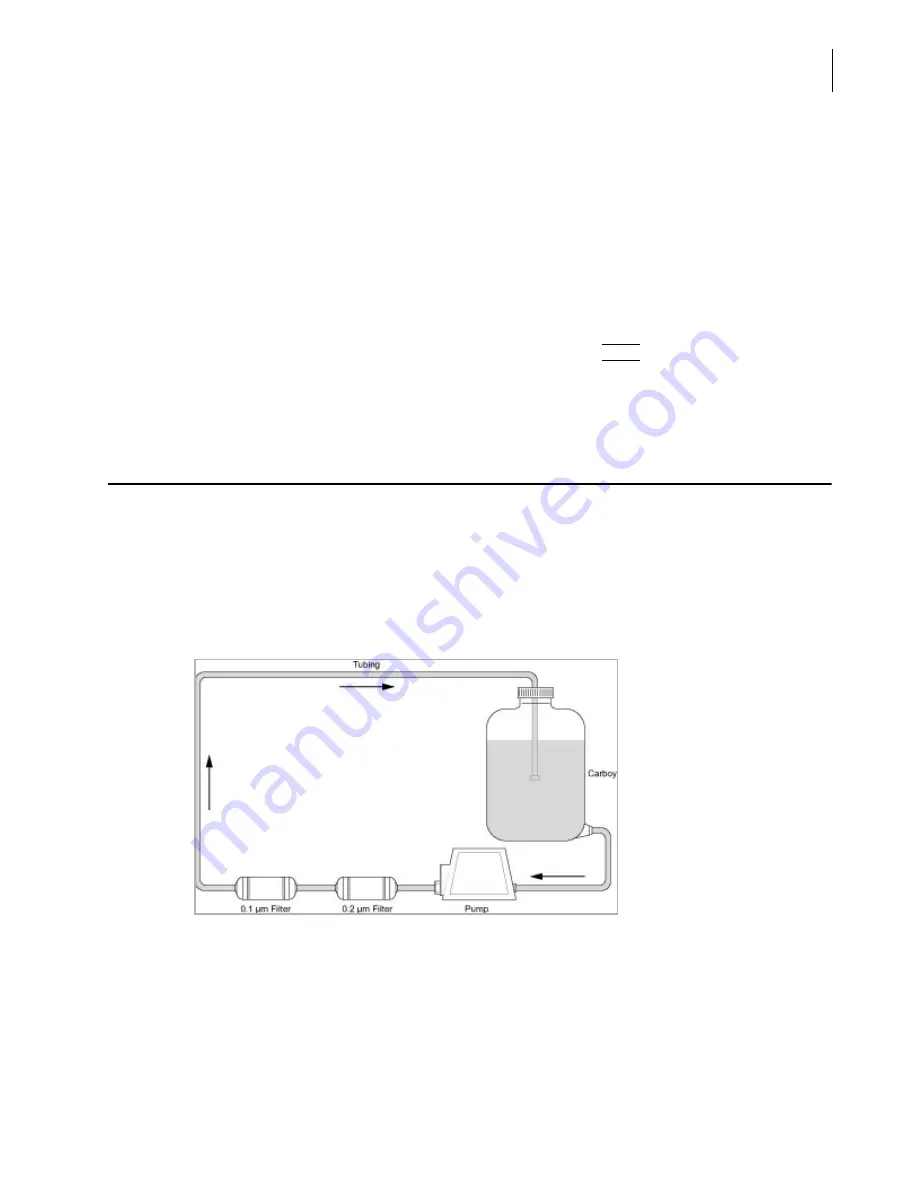
PN A51387A
B
1-17
Analyzer Overview
Pre-Filtering the Electrolyte and Cleaning Fluid
1
Clean the system with 98% Isopropyl Alcohol:
9.
Fill the Electrolyte Jar with 98% Isopropyl Alcohol.
10.
Repeat Steps 5 through 8 above.
Clean the system with de-ionized water:
11.
Rinse and fill the Electrolyte Jar with de-ionized water.
12.
Repeat Steps 5 through 8 above.
Flush the system:
13.
Fill the Electrolyte Jar with filtered ISOTON® II.
14.
On the Multisizer 4 software Instrument Toolbar, click the
(
Flush
)
button to flush the aperture
tube.
15.
Flush the aperture tube three times.
Pre-Filtering the Electrolyte and Cleaning Fluid
When working with small apertures, it is necessary to pre-filter de-ionized water and/or ISOTON® II
used to fill, flush, or clean the system and accessories.
Filter the Isoton II or diluent solution with a compatible 0.2-µm filter. A 0.1-µm filter can also be
used in series with a 0.2-µm filter for additional filtering. Contact a filtration supplier to determine
the appropriate filtration components for your application. One possible configuration for filtering
large amounts of diluent is shown in the diagram below (
).
Figure 1.10
Closed Circuit Filtration System
Summary of Contents for Multisizer 4
Page 12: ...xii List of Figures ...
Page 14: ...xiv List of Tables ...
Page 22: ...PN A51387AB xxii Introduction Before You Start Warnings and Cautions ...
Page 42: ...PN A51387AB 1 20 Analyzer Overview Preparing the Analyzer for Sample Runs ...
Page 160: ...PN A51387AB 6 16 Analyzing a Sample Using Blank Runs ...
Page 232: ...PN A51387AB 10 8 Regulatory Compliance Additional Security Features ...






























